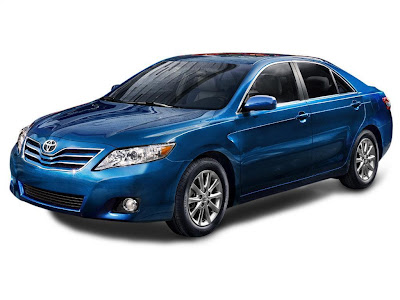Suzuki Kizashi 2010
uzuki Kizashi 2010
| |
Suzuki Kizashi 2010
Suzuki Kizashi 2010
The 2011 Suzuki Kizashi will compete against the Honda Accord, Toyota Camry, and Chevrolet Malibu. The Concept Kizashi 3 is shown here.
Consumer Guide’s Impressions of the 2011 Suzuki Kizashi
A big little-car company takes another stab at a midsize sedan, and this one’s all theirs. Kizashi--not its real name--promises a sporty persona and available all-wheel drive, but Camry, Accord, and Malibu probably have nothing to fear.
What We Know About the 2011 Suzuki Kizashi
That may be about to change. Suzuki’s new SX4 compact cars are off to a decent start, mainly because they’re decently stingy with a $4 gallon of gas. And unlike the underwhelming Esteem and Aerio of yore, the SX4 is appealing enough to earn Consumer Guide’s Best Buy ribbon for 2008.
Now Suzuki is revisiting the midsize sedan after flopping with the 2004-06 Verona, a disappointing shortcut designed and built by GM-Daewoo in South Korea. Suzuki sees the U.S. as its “next great frontier” market, believing it can--and should--make far more money here, hence this new stab at a mainstream car with potential yearly sales in the hundreds of thousands. Never mind that the 2011 Suzuki Kizashi will have the tough task of wooing buyers away from perennial class favorites Honda Accord and Toyota Camry. This big little-car company is determined to be as much a power in America as it is elsewhere. We’re frankly not sanguine about the prospects in light of past performance, but you gotta admire their pluck.
Already announced for a calendar-2010 debut, the 2011 Suzuki Kizashi will be a somewhat toned-down version of the Kizashi 3 concept unveiled at the March 2008 New York Auto Show. Kizashi is Japanese for “preview,” so a new title is expected for the showroom model. Unlike the Verona, this design is entirely Suzuki’s own, built on a new platform that may host other future vehicles.
If the concept is any guide, the 2011 Suzuki Kizashi will be 8-10 inches shorter than today’s Accord and Camry, but will ride a similarly long wheelbase and stretch 2-3 inches wider. The same comparisons hold for Chevrolet’s new and in-demand Malibu, another inevitable rival. Suzuki says Kizashi styling is meant to evoke “the physical superiority and dignity of a world-class athlete,” but we see mainly cribbed elements of Acura RL, Audi A6, Mazda 6, and several other cars. Kizashi is attractive, just not knockout original. Incidentally, one source predicts the concept’s roofline will be lifted a couple of inches and its 21-inch wheels replaced by more sensible shoes, probably 17s or 18s. Just so you know.
The 2011 Suzuki Kizashi will offer front-wheel drive and a choice of two powerteams. One comprises a new 2.5-liter 4-cylinder engine and a 5-speed automatic transmission. The other mates a 3.6-liter V6 with a 6-speed paddle-shift automatic and optional all-wheel drive. The 4-cylinder engine is said to be all-Suzuki, too. The V6, however, is based on the so-called “high feature” General Motors engine used in the Malibu and Suzuki’s own XL7 midsize SUV. It’s a vestige of the longtime GM-Suzuki alliance that was dissolved in March 2006 after delivering the Korean-built Verona and the soon-to-depart Suzuki Reno and Forenza compact cars.
Suzuki isn’t talking other Kizashi specifics just now, though it does boast of “strong, refined urban performance” and structural “weight- and space-saving technology that evolved from the lessons learned by Suzuki’s motorcycle and WRC [World Rally Championship] development teams.” With spin like this, you might think the Kizashi will offer the driving spirit of a Suzi bike with four wheels and all the comforts--which is doubtless what’s intended.
But let’s move on. Logically, the 2011 Suzuki Kizashi would include modern family car must-haves such as a four-wheel independent suspension, antilock brakes (with four-wheel discs likely standard at least for V6s), front and curtain side airbags, air conditioning, and power windows/locks/mirrors. But we’d also expect a no-cost navigation system, as announced for 2009-model SX4s. We haven’t heard about options yet, but the list will probably show rear-obstacle detection, radar-based cruise control, leather upholstery for 4-cylinder models, and the obligatory high-power sound system.
Summing up, the 2011 Suzuki Kizashi could be a worthy new choice among midsize family sedans. It might even be the new class “driver’s car” by dint of what the company terms a “‘super sport’ identity, a core component of the Suzuki brand DNA.” Then again, it could just as easily be another Suzuki car that over-promises and under-delivers both on the road and the sales chart. We’ll keep you posted.















